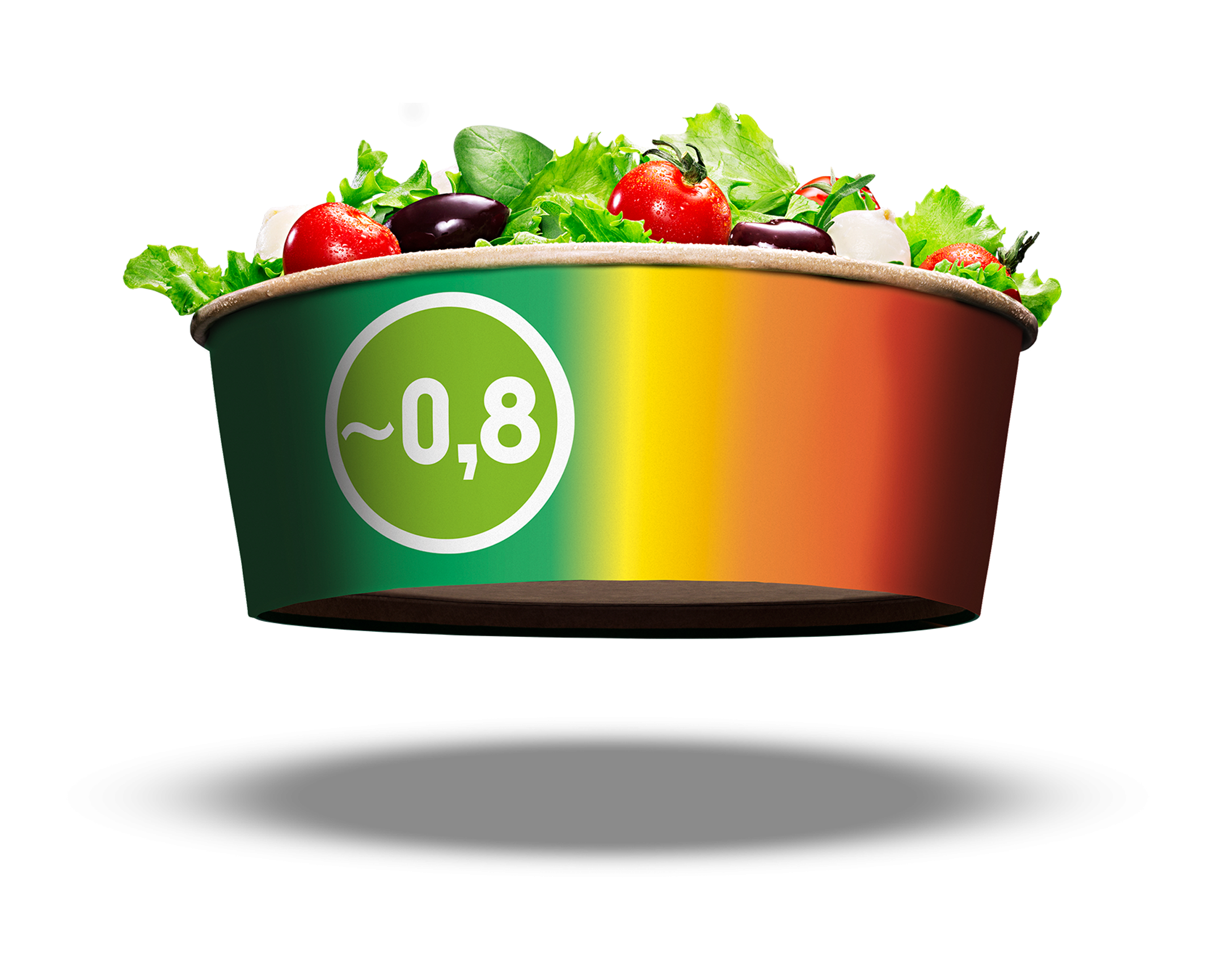CLIMATE FOOD PRINT
The food we eat stands for 30% of the global carbon dioxide emissions1). It. Is. Not. Ok.
And waiting is not an option—we need to act. Now. Most people would like to make a move, but don’t know how.
Heard of The Paris climate agreement? It aims to strengthen the global response to the threat of climate change by limiting the temperature increase to 1.5 degrees Celsius. One key to reaching that target is to lower each served meal to 0,5 kg CO2e.
Our goal is to reach below the 0,5 kg CO2e per average meal by 2030—the level needed to stop reverting global warming2). Our new Climate Foodprint™ labeling is a nudging tool that will help you (and us!) to make conscious and greener choices. Combined with the health labelling Nutri-Score, we hope to contribute to a healthier life—both for you as an individual and the planet.
1) IPCC, 2019
2) EAT Lancet, 2019

